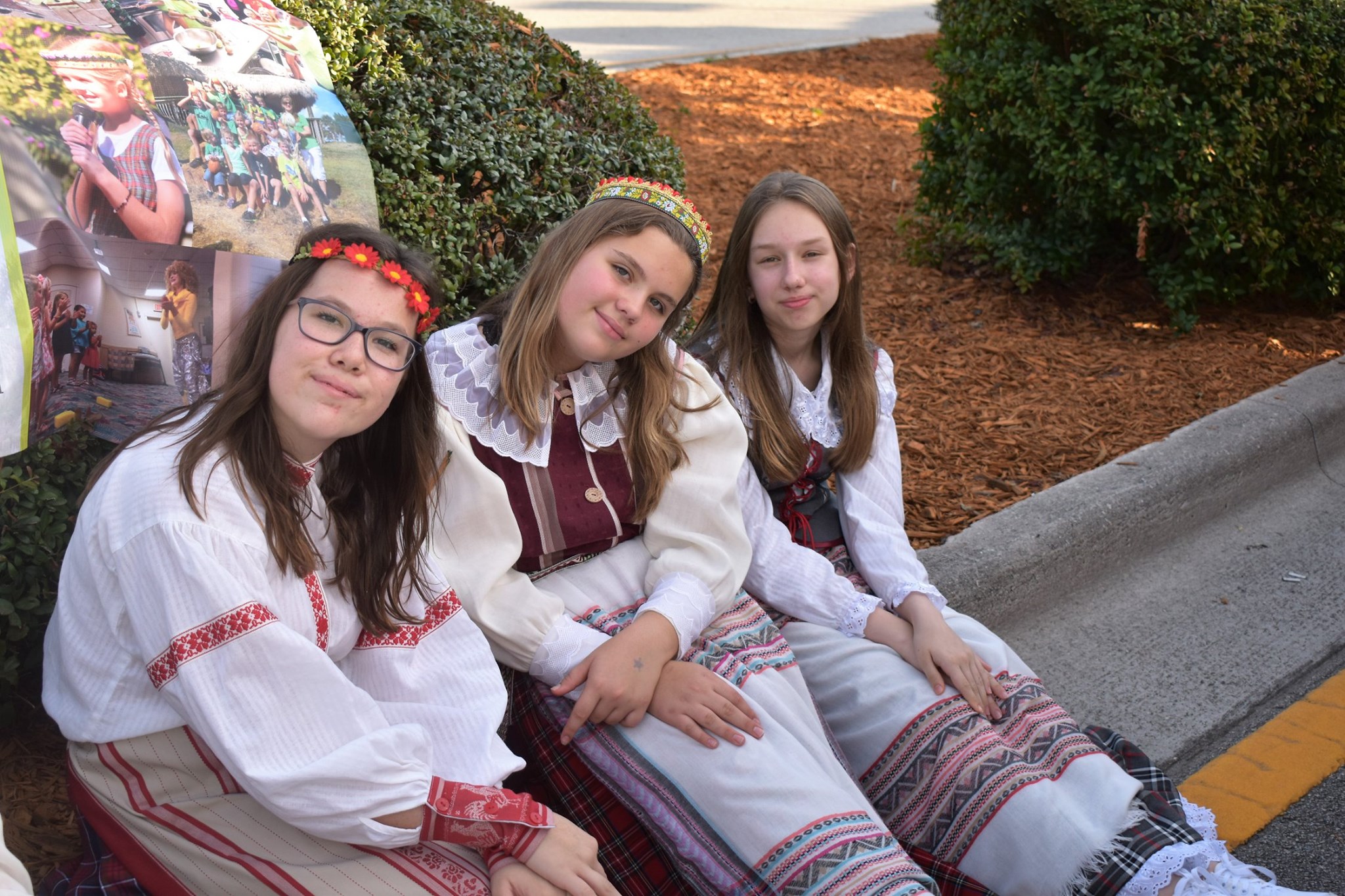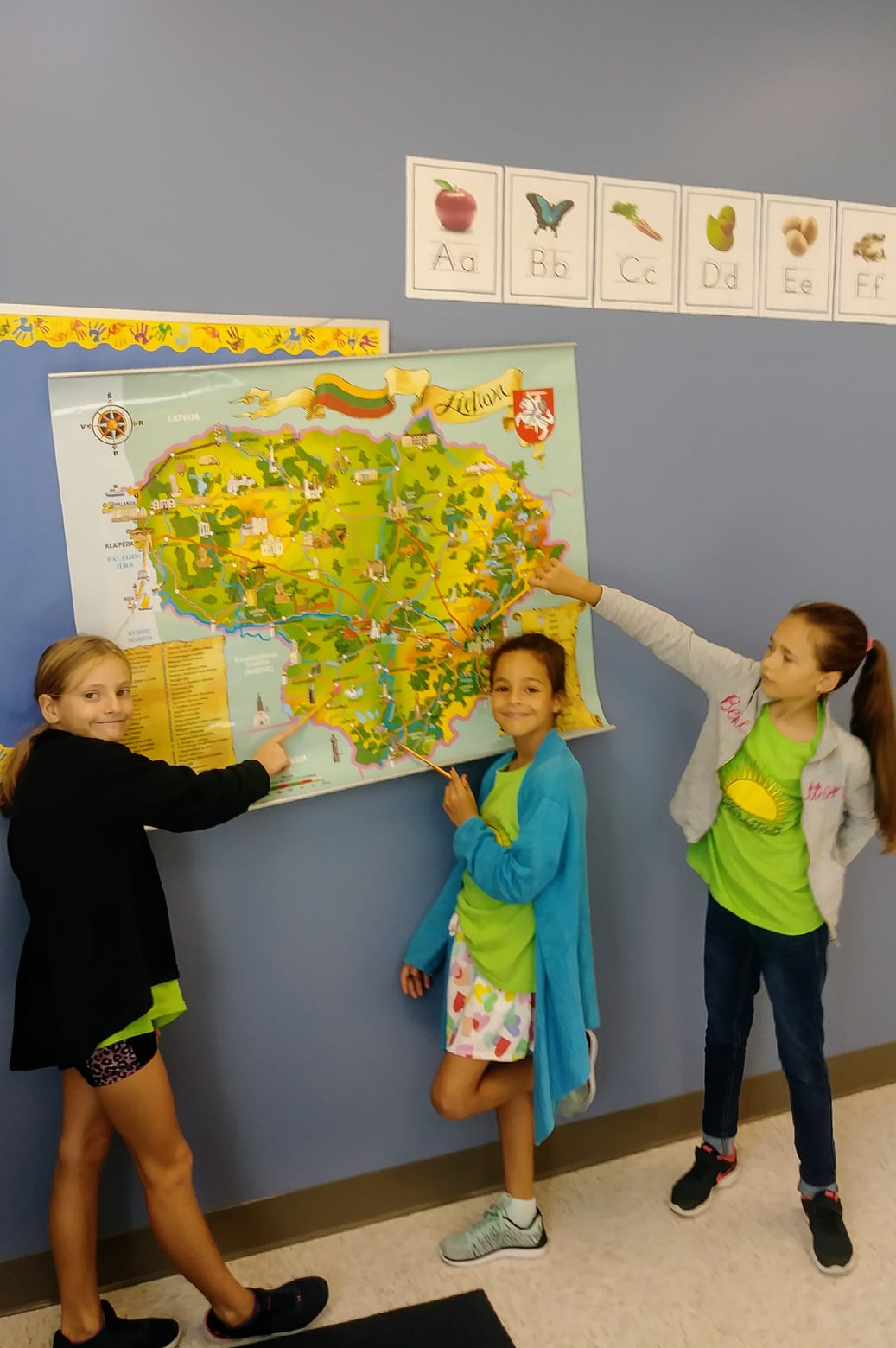


Community-Based Heritage Language Schools (CBHL)
Languages:
Lithuanian
Independent non-profit school
Sauletas Krantas Lithuanian Saturday School
Boynton Beach, Florida 33426
Lithuanian Language and Cultural Education in South Florida Institute Background
About Saulėtas Krantas Lithuanian Saturday School
Saulėtas Krantas Lithuanian Saturday School was established in 2004 to provide Lithuanian language and cultural education in South Florida. Our school gives students the opportunity to know their roots, in an environment where they can learn more about Lithuania, learn the language, traditions and history, and find Lithuanian-speaking friends. Saulėtas Krantas Lithuanian School is a non-sectarian organization, not affiliated with or restricted to a particular religious group.
Students from 3 to 16 years of age are accepted to the school. Classes meet on every other Saturday, from 10AM to 2PM, September through May. Adult classes are also offered in a virtual format. Our teachers are native Lithuanian speakers and experienced professionals who know how to work with children.
The school program offers instruction from novice to advanced level on the A.C.T.F.L. Proficiency Scale. Since 2020, our enrollment has increased by 30%. Learners improve specific language skills for business, education or travel. Students who successfully complete their education at the school receive the following benefits: access to high school and college credits, cultural appreciation, and competitive advantage in the global economy.
Quick facts
Established in 2004
Provides Lithuanian language and cultural education in South Florida
Non-religious
Classes on (every other) Saturdays, 10AM-2PM, September through May
25-30 students enrolled per year
A non-profit organization
www.SauletasKrantas.org
In 2020 Saulėtas Krantas Lithuanian Saturday School incorporated as a non-profit 501(c)(3) organization (Sunny Coast Lithuanian Center, Inc. (EIN 84-4301429)). The school operates with a Director, a parent liaison and a Board of Directors. Our sponsors include the Lithuanian American Community, Lithuanian American Board of Education, the Kazickas Family Foundation, the Lithuanian Fund, and Lithuanian Ministry of Education, Science and Sports.
- Access
- Excellence
Improve Access for all learners in more languages
Percentage of types Students
Heritage Language Learners 95%
Multilingual Learners 5%
Learners who speak a language that is linguistically related to the target language %
Learners who speak a language that is culturally (but not linguistically) related to the target language %
Types of language learners are enrolled
- Heritage language learners (second generation or more)
- Recent immigrants
- English Language Learners
Programs available in your school
- Continuous program from grades Pre-K to 12 (novice to advanced)
How do the programs identified above meet the needs of learners of different ages in your school
We offer age-appropriate instruction for all learners at our school.
What additional activities do you implement at your school to attract and maintain enrollment of students in different groups
In addition to our teaching curriculum, our program offers visiting artists, musicians and writers, concerts, art shows, Mugė Craft Fairs, Lithuanian Independence Day celebrations, picnics and field trips.
Main reasons students attend your school
- To connect with their heritage in a meaningful way
- To gain literacy in the language, in addition to oral communication skills
- To communicate with relatives in the home country
- To communicate with relatives or others in the language community in the U.S.
- To learn and use a language that is not offered in high school
- To attend university in the home country
- To earn credits for high school or university studies in the U.S.
- To gain bilingual proficiency for future professional use
Do you offer different pathways of study and engagement to align with the interests and goals of the learners in your school?
Through our learning program, we strive to meet the interests and goals of each learner in our school. Our teachers use the latest learning techniques and technologies to engage students,
How does your school strive to provide incentives for students to enroll in the language programs?
- Community and/or parent outreach
- Credit transfer to K-12 schools
- Community functions (e.g. culture events, clubs, etc.)
Percent of the students attend your school remotely
Students who live in same area...........90 %
Students who live in different area...........10%
Different types of classes meet the needs of students
Our school gives students the opportunity to know their roots, in an environment where they can learn more about Lithuania, learn the language, traditions and history, and find Lithuanian-speaking friends. Saulėtas Krantas Lithuanian School is a non-sectarian organization, not affiliated with or restricted to a particular religious group.
Students from 3 to 16 years of age are accepted to the school. Classes meet on every other Saturday, from 10AM to 2PM, September through May. Adult classes are also offered in a virtual format. Our teachers are native Lithuanian speakers and experienced professionals who know how to work with children.
The school program offers instruction from novice to advanced level on the A.C.T.F.L. Proficiency Scale. Since 2020, our enrollment has increased by 30%. Learners improve specific language skills for business, education or travel. Students who successfully complete their education at the school receive the following benefits: access to high school and college credits, cultural appreciation, and competitive advantage in the global economy.
Types of instructional formats your school offer
- In-person
How the instructional formats available at your school enable learners from different geographical areas and other distance-related constraints to receive instruction
When required, we offer online instruction for students Pre-K through age 16. Adult classes are conducted remotely.
Please describe other ways in which your school excels with respect to this factor.
We utilize the latest technologies to provide high-quality instruction. Because of our successful partnerships with our parents and our local business community, we have been able to adapt quickly to any changes required for the learning environment.
What are the main sources of financial support for your school
- Tuition
- Home/heritage country
- Other grants
- Private donations from individuals
- Fundraising events
Does your school offer financial assistance to students?
Yes
How important is the impact of the financial assistance on student enrollment at your school
3
Which of these common competing commitments faced by the learners most negatively impact student enrollment and/or attendance
Name
After-school activities in the mainstream schoo
Homework and other academic pursuits
Extra-curricular activities (sports, music, hobbies)
Religious obligations
Family obligations
Work
Field name
Attendance
Yes
Yes
Yes
No
No
No
Yes
Enrollment
No
No
No
No
No
No
No
How has your school been able to accommodate your students’ competing commitments so that they can attend your school?
Yes.
How has your school been able to accommodate your students’ competing commitments so that they can attend your school?
Yes.
Does your school provide information to parents and other stakeholders about essential school information?
Yes
What are the most effective communications methods with parents and stakeholders?
Email, website, Facebook posts, in-person meetings.
What aspects of these methods or strategies for reaching out to parents create effective means of sharing information?
Relevant and timely communication is most important.
Does your school communicate with the community at large about events and other information?
Yes
Please describe any educational and cultural activities, seasonal events, as well as other programs and opportunities that your school makes available to the community at large.
All of our external events are open to the community at large. Part of our mission is to educate our local community about Lithuania, its language and culture, and the fact that more than a million Lithuanian-Americans live in the US, many calling South Florida home. Since 2004 we have been providing language and cultural education to the children of the Lithuanian diaspora community.
How do these activities create linkages to your community of students, teachers, stakeholders?
Because of successful links to community stakeholders, we have been able to build awareness of our school and our various programs; we have been able to increase financial support of our school through donations (financial and in-kind); and, we have introduced South Florida communities to Lithuanian culture.
List the percentage of students by age group
PreK-K students 12%
Kindergarten students 12 %
Elementary school students 50 %
Middle school students (grades 6-8) 25 %
Adults 1 %
Excellence through transparency and accountability
Curriculum and instruction
- Curriculum and instruction that build on the linguistic skills and cultural knowledge that learners bring to the classroom
Outcomes
- Receipt of credit for language proficiency, officially included in the students’ academic record, if possible
Professional Development
- Recruitment of skilled educators and other personnel
- Provision of ongoing professional development for educators and other personnel
Vision, Strategic Planning, and Priorities
- A publicized vision statement and strategic plan to assemble the human, institutional, and financial resources of the school that support the goals of the school
Transparency, Accountability, and Outreach
- Outreach via a website, social media, and additional forms of communication to inform the community about relevant events and new developments at the school
Institution Information
Year School was Established
2004
Languages taught at your school
Lithuanian
Average Number of Students
30
Average Number of Teachers
4
Saturday or Sunday Classes
Number of weeks per year: 4
Number of hours per week: 18
